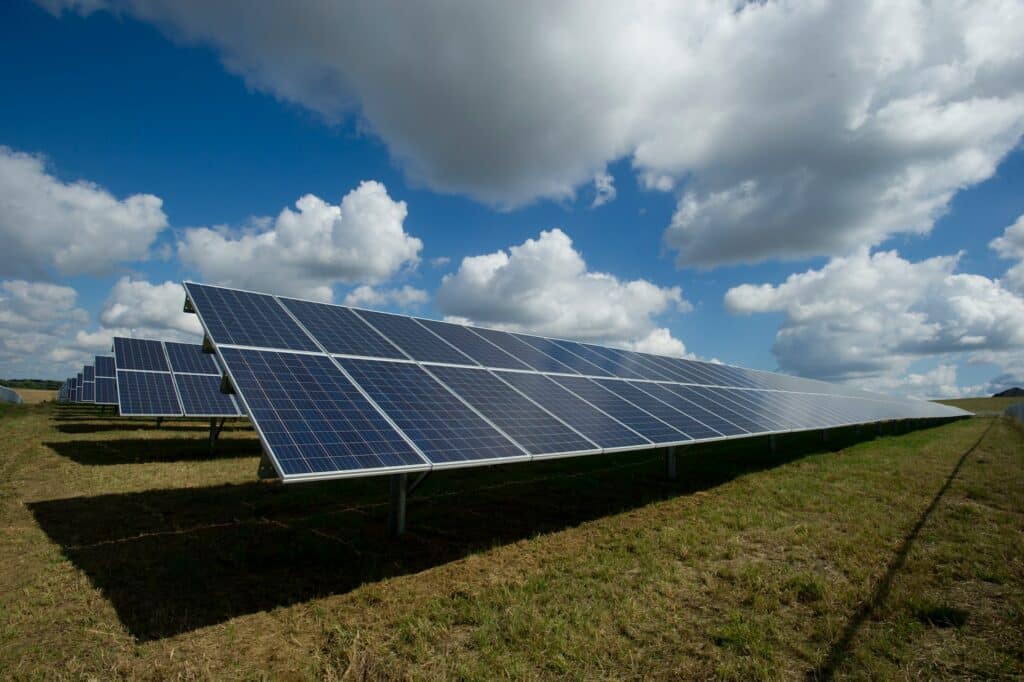This is our resource for looking at the innovative ways people are tackling climate change. We have also covered outstanding examples like the Footprint Coalition venture group that was put together by Robert Downey Jr. This is a unique way to approach carbon reduction, climate change, using a combination of for-profit motives and science-backed projects.
1. Renewable Energy Storage

Renewable energy storage technologies will continue to improve in 2023, making it easier and more cost-effective for businesses and homeowners to store energy from renewable sources such as wind and solar. This will help reduce the cost of electricity, reduce emissions, and increase the reliability of renewable energy sources. Increasing temporal reliability is one of the main challenges of renewable energy compared to fossil fuels. The problem has been noted by Bill Gates, the result of which was a big investment in an energy storage company through his Breakthrough Energy Ventures company.
2. Smart Buildings
Smart building technologies will become more popular in 2023, allowing for more efficient use of energy and resources in commercial and residential buildings. Smart buildings are equipped with sensors that monitor energy use and adjust energy consumption accordingly. This will help reduce energy costs and emissions while increasing comfort and convenience.

3. Electric Vehicles
Electric vehicles will continue to be a popular option in 2023, offering a more sustainable and cost-effective way to travel. Electric vehicles produce fewer emissions than traditional vehicles, and they are becoming more affordable as battery technology improves. The giant shift now is that EVs are becoming mainstream, comprising a much larger fraction of new sales and also a respectable fraction of cars on the road. The $550 billion dollar Inflation Reduction Act of the US Congress in 2022, however controversial, adds impetus to the transition.
4. Carbon Capture and Storage
Carbon capture and storage (CCS) technologies are becoming increasingly important as the world works to reduce emissions. CCS technologies capture and store carbon dioxide from the atmosphere, preventing it from contributing to climate change. This technology will become increasingly important in 2023 as the world works to reduce emissions and mitigate the impacts of climate change.
5. Sustainable Agriculture
Sustainable agriculture practices such as agroforestry, regenerative agriculture, and no-till farming will continue to be important in 2021. These practices help to reduce emissions, conserve water, improve soil health, and increase crop yields. This will help to ensure that the world’s food supply is more sustainable and resilient in the face of climate change.
6. Nature-Based Solutions
Nature-based solutions such as afforestation, reforestation, and wetlands restoration are becoming increasingly important in 2023. These solutions help to reduce emissions, improve biodiversity, and protect against the impacts of climate change such as floods and droughts.
7. Carbon Footprint Of AI
Large language models (LLMs) like ChatGPT are taking the world by storm in terms of the numbers of users signed up, the amount of venture funding going into start ups using the tech, and the impact on large tech companies best exemplified by Microsoft’s investment in OpenAI. The impact isn’t limited to Microsoft. Google has been working hard in the space which resulted in integration of BERT LLM in the backend processing of web data, and Meta has produce unique code such as Galactica. Each time an LLM is trained it uses thousands to millions of processors which comprises considerable energy use. Kudos to researchers for bringing to light the carbon impact of these models and for highlighting in general the carbon impact of compute centers that rely on very dirty grid energy.
From Shrink That Footprint
# Take further climate action (overview)
From around the web
# Climate Knowledge & Innovation Community
Lindsay Wilson
I founded Shrink That Footprint in November 2012, after a long period of research. For many years I have calculated, studied and worked with carbon footprints, and Shrink That Footprint is that interest come to life.
I have an Economics degree from UCL, have previously worked as an energy efficiency analyst at BNEF and continue to work as a strategy consultant at Maneas. I have consulted to numerous clients in energy and finance, as well as the World Economic Forum.
When I’m not crunching carbon footprints you’ll often find me helping my two year old son tend to the tomatoes, salad and peppers growing in our upcycled greenhouse.
